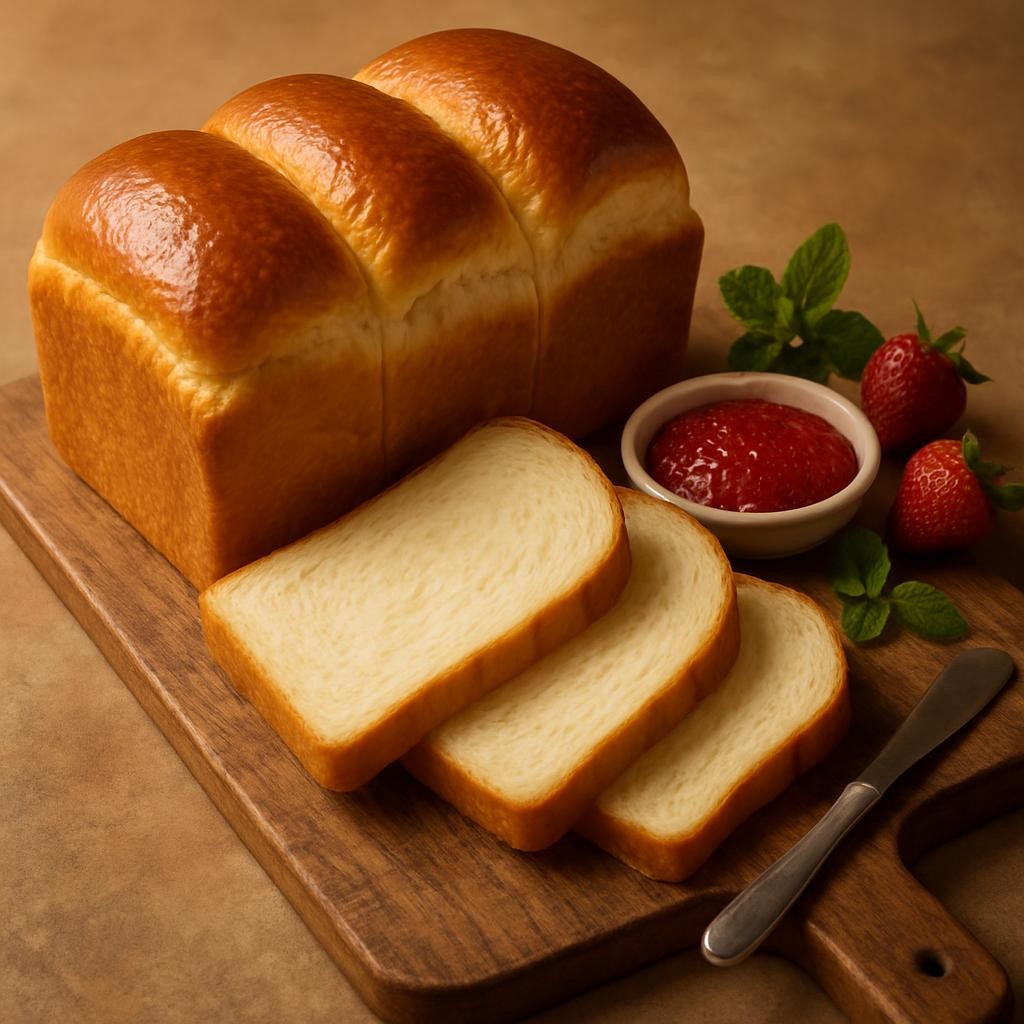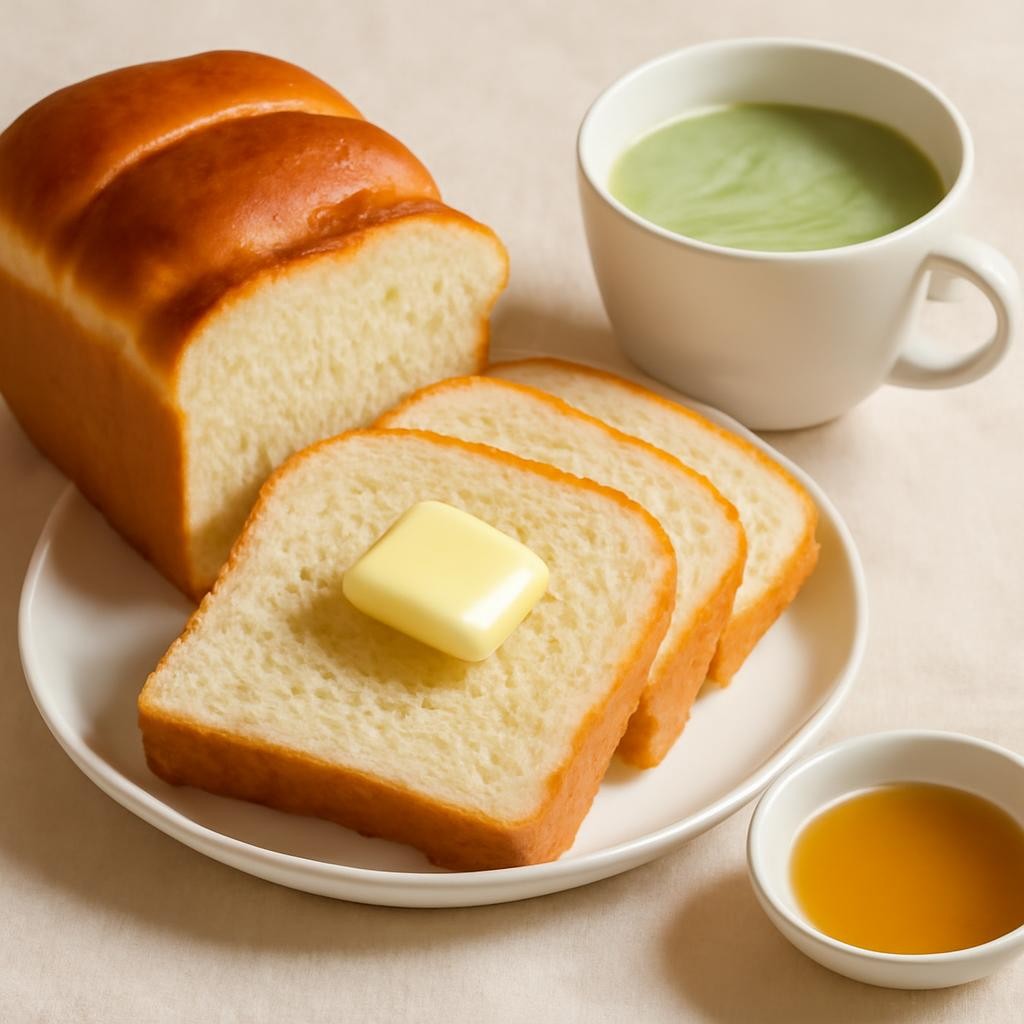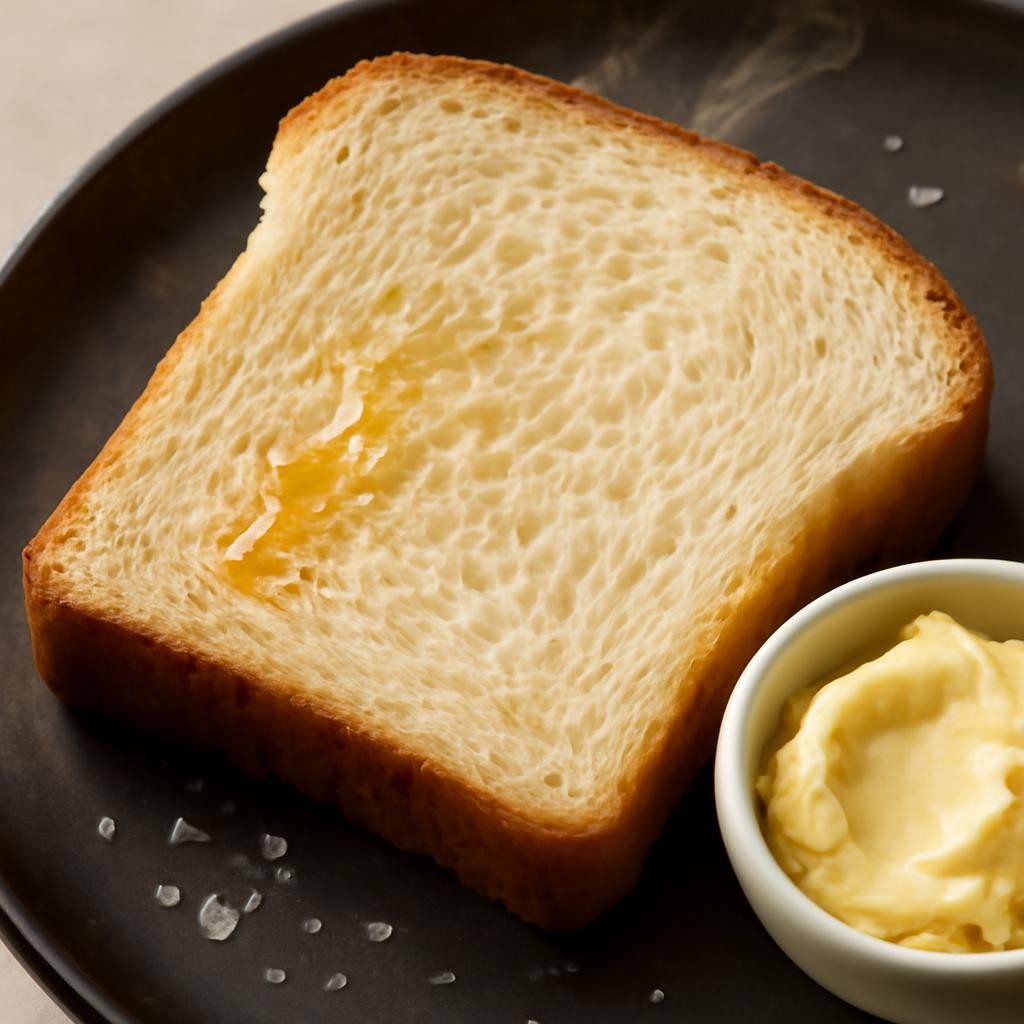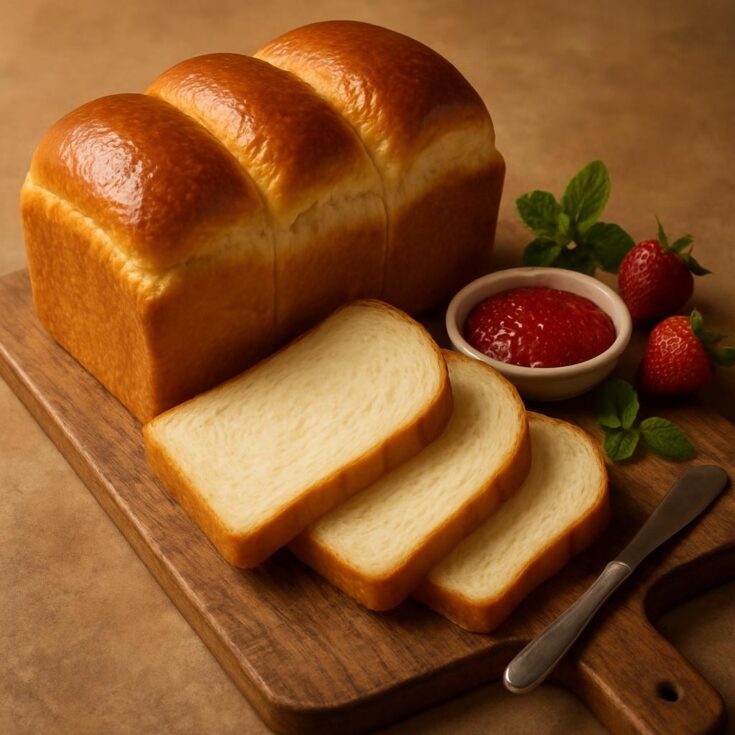Japanese Milk Bread, known for its soft, fluffy texture and slightly sweet flavor, is a delightful treat that has captured the hearts of many. This bread, also known as “Shokupan,” is a staple in Japanese households and is perfect for everything from breakfast toast to sandwiches. Its unique tangy flavor comes from a technique called the “Tangzhong” method, where a flour-water paste is cooked before being incorporated into the dough. This recipe not only provides a comforting taste but also a wonderful texture that melts in your mouth.

Why You Will Love This Recipe
This Japanese Milk Bread recipe is loved for its incredibly soft and pillowy texture, making it an excellent choice for those who enjoy baking homemade bread. The flavor is subtly sweet, yet versatile enough to pair beautifully with both sweet and savory toppings. Additionally, the process of making this bread is straightforward, even for beginners, allowing you to create something impressive without needing professional skills. It fits well into various diets, especially when used for wholesome breakfasts or light lunches.
Tips and Tricks
1. Use Bread Flour: Opt for high-protein bread flour rather than all-purpose flour for a better rise and chewiness.
2. Temperature Matters: Ensure your milk is warm but not hot when adding yeast, as too much heat can kill it. A temperature around 110°F (43°C) is ideal.
3. Kneading: Knead the dough until it passes the windowpane test, meaning it can stretch thin without tearing.
4. Perfectly Shaped Loaves: When shaping the dough, try to create tension on the surface by gently pulling it towards you as you roll.
5. Allow for a Long Rise: Don’t rush the fermentation; allowing the dough to rise slowly enhances flavor and texture.
Make Ahead Tips
You can prepare the Tangzhong the night before and store it in the refrigerator for up to 3 days. This will save time when you’re ready to bake. Additionally, you can shape the loaves and place them in a pan, then cover and refrigerate overnight. The next day, let them come to room temperature before baking. The bread stays fresh for about 3-4 days at room temperature when stored in an airtight container.

Recipe Variations
1. Herb Infused: Add dried herbs like rosemary or thyme for a savory twist.
2. Cinnamon Swirl: Before rolling the dough, sprinkle a mixture of cinnamon and sugar for a delicious swirl.
3. Fruit Add-ins: Incorporate dried fruit or nuts during kneading for added texture and flavor.
4. Matcha Milk Bread: Blend in matcha powder for a vibrant green color and unique taste.
How to Serve
Serve your Japanese Milk Bread sliced thick with a pat of butter or your favorite jam. For a more substantial meal, consider using it for sandwiches filled with egg salad, ham, or roasted vegetables. Presentation is key; stack the slices neatly on a wooden board, garnished with fresh fruit or herbs for a colorful touch.

Pairing Suggestions
Pair your fresh Japanese Milk Bread with a light tea like Sencha or a creamy coffee. It also pairs well with a refreshing fruit salad or a bowl of miso soup for a comforting meal. For dessert, consider serving it alongside a scoop of matcha ice cream.
How to Store
To store leftovers, wrap the bread tightly in plastic wrap or place it in an airtight container at room temperature for up to 4 days. For longer storage, freeze slices in a single layer, then transfer to a zip-top bag for up to 3 months. When ready to eat, simply toast or let thaw at room temperature.
Equipment Needed
- Mixing bowls
- Wooden spoon or dough whisk
- Stand mixer (optional, but helpful for kneading)
- Plastic wrap or a clean kitchen towel
- Loaf pan (9×5 inch)

Dietary Adaptations
To make this bread vegan, substitute dairy milk with plant-based milk (like almond or oat milk) and replace butter with coconut oil or a vegan butter alternative. For a nut-free version, ensure that your plant-based milk is nut-free as well.
Seasonal Adaptations
In spring and summer, consider adding fresh herbs or seasonal fruits like strawberries. During fall and winter, spices like nutmeg or pumpkin spice can be blended into the dough for a cozy flavor.
Recipe FAQs
1. Can I use all-purpose flour? While possible, using bread flour yields better texture due to its higher protein content.
2. How long should I knead the dough? Knead for about 10 minutes until smooth and elastic.
3. What if my dough doesn’t rise? Ensure your yeast is fresh and the environment is warm. You can place it in a slightly warm oven for optimal rising conditions.
Japanese Milk Bread

Japanese Milk Bread, known for its soft, fluffy texture and slightly sweet flavor, is a delightful treat that has captured the hearts of many.
Ingredients
- 1/2 cup (120ml) whole milk
- 1/4 cup (60ml) water
- 1/4 cup (50g) sugar
- 1/4 cup (56g) unsalted butter, softened
- 2 cups (250g) bread flour
- 1/2 cup (60g) all-purpose flour
- 1 teaspoon salt
- 2 teaspoons instant yeast
- 1/4 cup (30g) Tangzhong (made from 1/4 cup flour and 1/2 cup water)
Instructions
- Make the Tangzhong: In a small saucepan, whisk together 1/4 cup of flour and 1/2 cup of water. Cook over low heat, stirring constantly, until it thickens (about 3-5 minutes). Remove from heat and let cool.
- Activate the Yeast: In a mixing bowl, combine warm milk, water, and sugar. Stir in the yeast and let it sit for about 5 minutes until foamy.
- Combine Ingredients: Add the cooled Tangzhong, bread flour, all-purpose flour, and salt to the yeast mixture. Mix until a dough forms.
- Knead the Dough: Transfer the dough to a floured surface and knead for about 10 minutes until smooth and elastic. Alternatively, use a stand mixer with a dough hook.
- First Rise: Place the dough in a greased bowl, cover with plastic wrap, and let it rise in a warm place until doubled in size (about 1-2 hours).
- Shape the Loaf: Punch the dough down and divide it into three equal pieces. Shape each piece into a ball and let them rest for 10 minutes. Then, flatten each ball into a rectangle, roll tightly, and place seam side down in a greased loaf pan.
- Second Rise: Cover the pan with a towel and let it rise until the dough crowns above the rim of the pan (about 30-60 minutes).
- Preheat the Oven: Preheat your oven to 350°F (175°C).
- Bake: Bake for 30-35 minutes or until golden brown and the internal temperature reaches 190°F (88°C).
- Cool: Remove from the oven, let it cool in the pan for 10 minutes, then transfer to a wire rack to cool completely before slicing.
Nutrition Information:
Yield: 1 Serving Size: 1Amount Per Serving: Calories: 1250Total Fat: 9gSaturated Fat: 4gTrans Fat: 0gUnsaturated Fat: 4gCholesterol: 17mgSodium: 2205mgCarbohydrates: 248gFiber: 11gSugar: 7gProtein: 40g
Asianplated.com, occasionally offers nutritional information for recipes contained on this site. This information is provided as a courtesy and is an estimate only. This information comes from online calculators. Although allchickenrecipes.com attempts to provide accurate nutritional information, these figures are only estimates.
Final Thoughts
Japanese Milk Bread is a delightful addition to your baking repertoire, offering a unique taste and texture that is hard to resist. With its simple ingredients and straightforward method, it’s an achievable recipe for both novice and experienced bakers. As you enjoy the fruits of your labor, remember that this bread can be adapted to suit any occasion. So go ahead, embrace the art of bread-making, and share this soft, sweet delight with friends and family!
